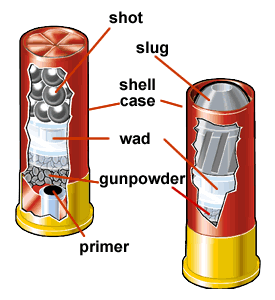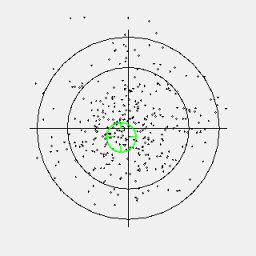Due to the amount of information on types of shot shells and their uses without even going into reloading we have reproduced the following information from the Field and Game Australia website as a summary of what to look for.
Shot Shell Selection
There are hundreds of shot shell brands and typ es sold throughout the world. Enthusiasts can spend many hours studying the finer differences between one shell and another. In almost every decision you will need to make there are just three
es sold throughout the world. Enthusiasts can spend many hours studying the finer differences between one shell and another. In almost every decision you will need to make there are just three
basic factors to consider.
Which shot shell?
What size and type of shot?
How fast do you want it to travel?
Shot Shell Types:
Gauge: 10 to 28 gauge (plus .410 Calibre)
Shell Length: 2½”, 2¾”, 3” or 3½”
Hull Type: Reifenhauser or HS (high-strength)
Brass: Brass Plated, Zinc Plated Steel base cups also available in High Brass and Standard
Shot Types:
Shot Size Lead: 000 Buck to 12
Steel: BB to 7
Shot Material: Lead, Copper Plated Lead, Bismuth, Steel, Tungsten-Iron, Tungsten-Nickel-Iron or Tungsten Polymer
Velocity Choices: 980 FPS to 1350 + FPS
Packaging:
Shotgun Shells are normally sold in packs of:
25 A Packet
250 A Half Case or “Slab“ – 10 Packets
500 A Case – Often delivered as 2 slabs.
Shot Shell Choices:
Shotgunning enthusiasts will talk for hours about the shot size and grams of shot in the shells they are using. For targets some will like the 7½ – 28 Gram blah-de-blahs while the
next person won’t shoot anything less than 36 grams because it kicks like a mule and travels further! And that’s before we get on to hunting loads for ducks vs. foxes!
The first point to remember is that shot size has nothing to do with gauge. AFTER you are sure about the gauge and length of shell you need, then the shot size choices become important. In general the choice of shot shell relates directly to what you wish to hit and how good you are at hitting it.
A shot shell contains multiple pellets. The shot size number indicates the size of each pellet and that determines the number of pellets that will fit in a standard cartridge. Shot sizes are usually portrayed in three groupings – Lead Shot, Buckshot (also lead) and Steel
Shot. Steel shot shells pellets are usually a little larger than lead. The steel is less dense and each pellet is slightly larger to achieve the range needed.
The number of pellets that fit into a shot shell depends on the size of the pellets used and the volume of everything else that goes into the shell. So the question is “how many pellets, of what size do you want to deliver over what distance?”
Let’s look at one popular combination. Clay targets travel at around 60-80 kph. Arguably the most popular target load is a 12 gauge, 7½ – 28 Gram shell. This will produce a good PATTERN at distances that relate well to a variety of clay target flight paths.
Shot Pattern
Shotguns and shot shell combinations are tested  over a number of different distances measuring the number of pellets that strike within a 30” circle. Ideally you would like your target to collide with enough pellets of the right size to stop it dead in its tracks.
over a number of different distances measuring the number of pellets that strike within a 30” circle. Ideally you would like your target to collide with enough pellets of the right size to stop it dead in its tracks.
For a clay target shot sizes 7½, 8 or 9 are what break a flying target best while providing for sufficient velocity to be created. The velocity will determine how far in front of the target you need to shoot in order that the two meet in mid air. This is called leading the target and is something you can rapidly get good at with practice.
When hunting much depends on the shot requirements needed to stop a particular prey. Shot sizes suitable for waterfowl will not effectively dispatch an adult fox that is 60 metres away.
http://www.fga.net.au/shotgun-basics-1-shot-shell-selection/w3/i1054184/
